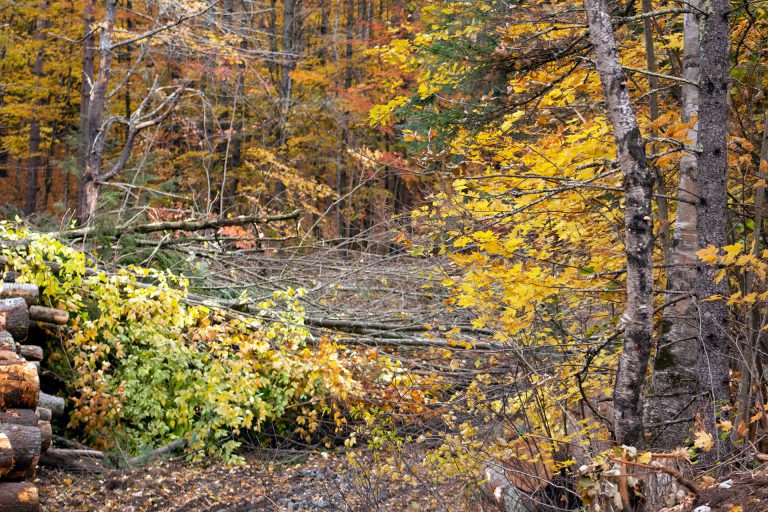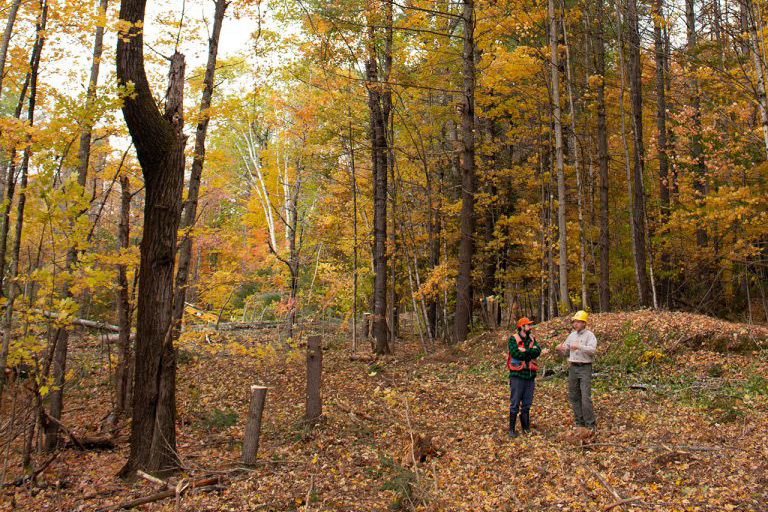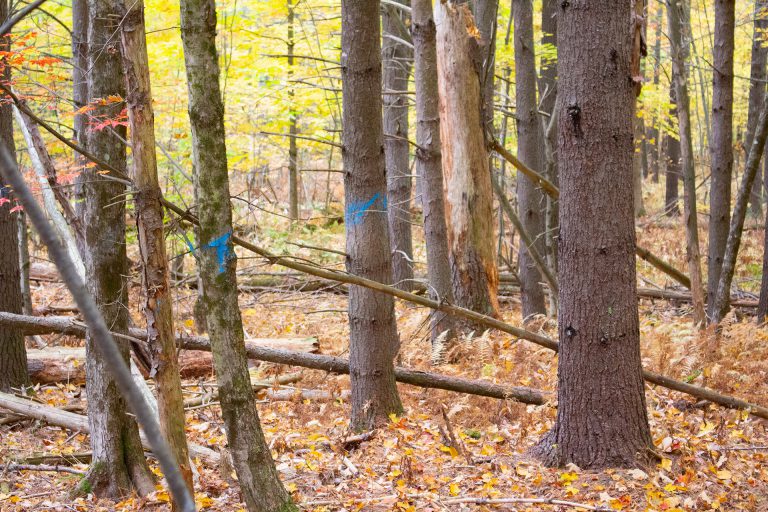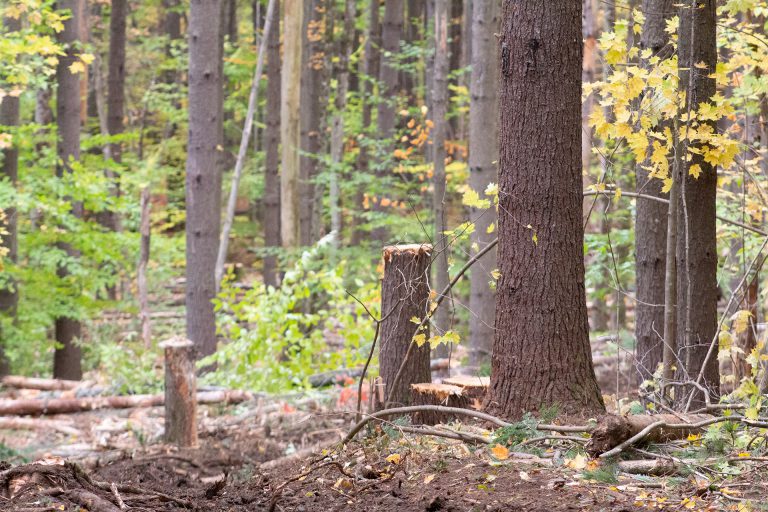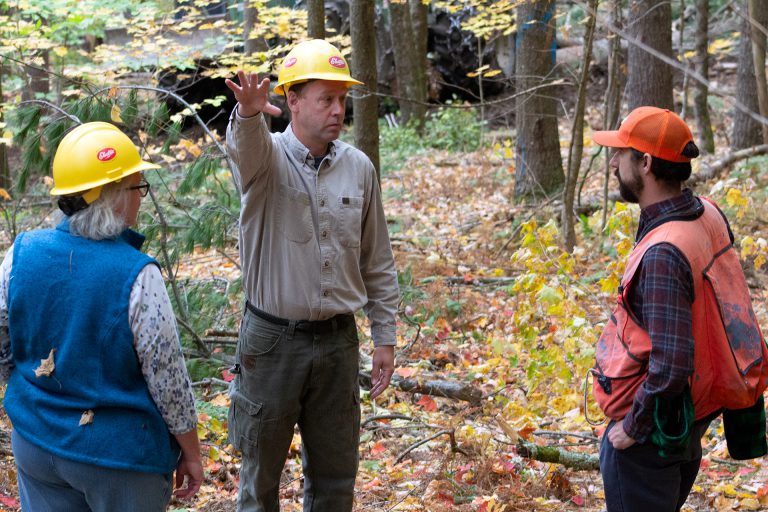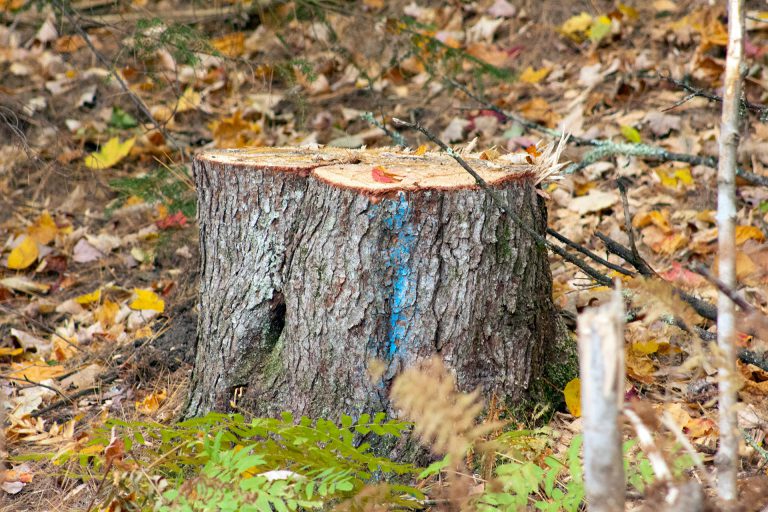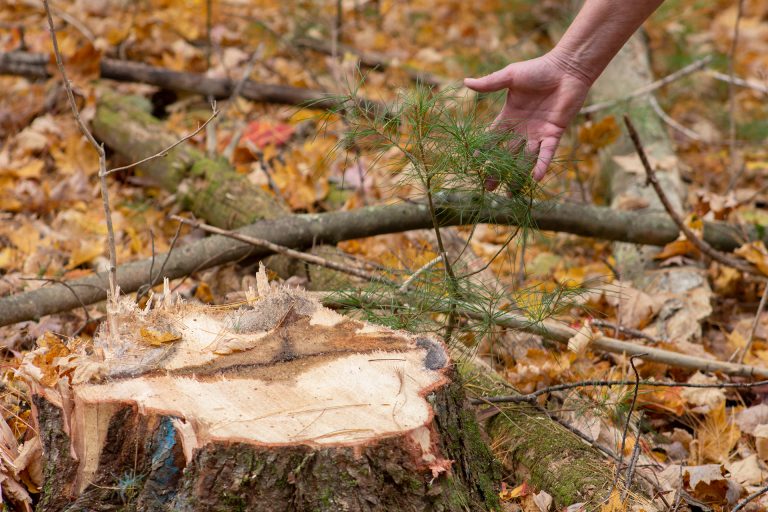Sustainable Forestry To Produce Electricity
Burlington Electric Department’s professionally licensed foresters share details about forest management methods.
As Burlington discusses the opportunity for district energy to improve efficiency at the McNeil Generating Station, we – Burlington Electric Department’s professionally-licensed foresters – who support McNeil’s sustainable forestry work, are pleased to provide our community more information to support the discussion. We have heard questions about the forest operations that produce the wood residues used at the plant to produce electricity. The four of us collectively have more than 80 years of experience working at BED and well over 100 years of experience in forest management. We take very seriously our job of managing forest operations pursuant to our Certificate of Public Good (CPG) approved by the Public Utility Commission and have a long history of sustainable fuel procurement in accordance with our CPG’s strict harvesting standards.
By providing a local, low-grade market, McNeil has encouraged productive forest management. In Vermont, tree growth exceeds removals by a 2:1 ratio; we are gaining more than twice as much forest inventory than what is being removed each year. McNeil’s use of forest residues (tops and limbs left, diseased or damaged trees, non-commercial wood left over from economic harvests) represents a small fraction of annual growth. By utilizing locally produced forest residues, we have reduced the reliance on out of state fossil fuels. Wood fuel dollars support local jobs, and those dollars remain in the regional economy. The fact that McNeil makes a positive difference for our forests and the local economy motivates us in our work every day.
While all methods of producing energy have downsides, the wood used to operate McNeil is one of the most sustainably managed resources available.
Some look at forest management through only one lens, such as carbon, or question whether forest management is even a good thing. Yet, forests are incredibly complex systems that cannot be viewed from any single point of view. Old forests store large amounts of carbon, while young forests sequester carbon at a much higher rate. Plant and animal species require the full suite of age classes to survive. A mix of age classes and harvesting systems across the landscape is the best way to ensure the greatest benefits from ecological, climate, and societal perspectives.
The district energy project has been designed to utilize steam and waste heat created from the existing McNeil Station, directly improving plant efficiency. This will not require additional wood resources or cause cutting additional trees from Vermont forests. The plant will be dispatched on an economic basis as usual and run when demand and prices warrant. McNeil provides an important renewable energy resource that reduces our region’s reliance on fossil fuels. District energy would be the biggest step forward in reducing fossil fuel use in Burlington’s heating sector.
Each of us cares deeply about our forests, and we all work closely with our contractors, consulting foresters, state wildlife biologists, and other stakeholders to ensure that the wood that fuels the plant is sourced in a way that protects and supports our environmental goals and helps ensure our forests remain as forests instead of facing development pressures. While all methods of producing energy have downsides, the wood used to operate McNeil is one of the most sustainably managed resources available. Increasing plant efficiency by using a portion of that resource to further reduce our reliance on fossil fuels makes good sense.
Betsy Lesnikoski, Seth Clifford, Don Tobi, and Kevin Fink

